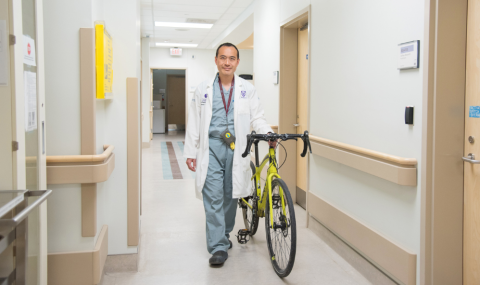Surgical Incisions
- Surgical incisions are made in the sterile environment of the operating room. Every precaution is taken to prevent infection, but all surgery carries the possibility of the wound becoming contaminated with bacteria.
- People who are already critically ill are at a higher risk because their bodies are already working hard to heal from their illness or injury. Staff will monitor the incision for infection, keep it clean and bandage it as needed.
Central lines
- Central lines are placed through the skin into major blood vessels. They are essential to deliver larger amounts of fluid, total nutrition for people who cannot eat, and many medications. However, they also pose a risk for infection because they break through the skin right into a major blood vessel.
- Central lines are inserted in a sterile way after all the bacteria on the skin have been removed with antiseptic. They are monitored and cleaned regularly to prevent infection. Special dressings are applied to decrease exposure to bacteria that can cause infection at the site.
Pressure ulcers
- Also known as bed sores, pressure ulcers happen when a person's skin does not get enough oxygen and nutrients from the blood. Pressure ulcers can develop when a person lays in one position for too long. Critical illness can disrupt blood flow to the skin as well as other organs. People in the Medical-Surgical ICU are particularly at risk for skin breakdown.
- The nursing staff turn patients regularly if it is safe to do so. Many of our staff have taken additional education to assess and manage skin breakdown in intensive care. The ICU has a group of nursing staff who assess each patient’s skin weekly and manage skin treatments.


